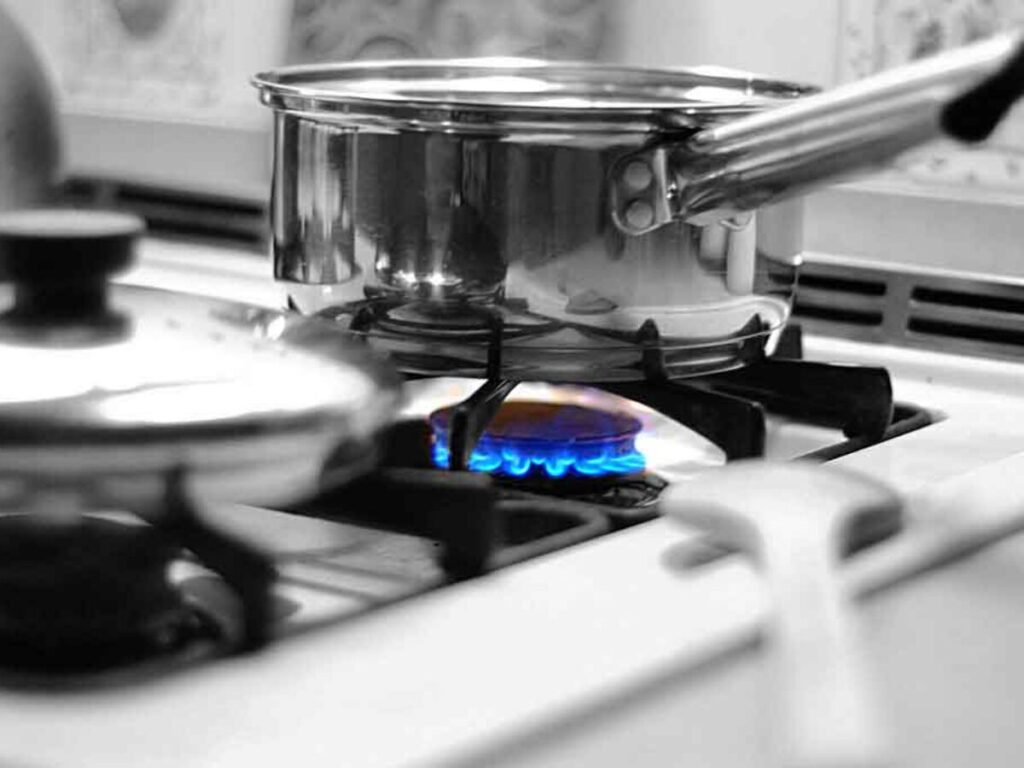
Leaving your gas stove unattended can seem harmless, but it’s a dangerous practice that can have severe consequences. A seemingly small oversight like leaving the left gas stove on for 5 hours can quickly escalate into a life-threatening situation. This article will delve into the potential dangers of leaving a gas stove on, highlighting the risks of carbon monoxide poisoning and fire hazards. We’ll also discuss the importance of proper ventilation and provide essential safety tips to ensure your kitchen remains a safe space.
Gas Stove Dangers
Gas stoves utilize natural gas or propane as fuel, which burns to produce heat for cooking. While incredibly convenient, this process generates byproducts like carbon monoxide and unburnt gases that can pose significant health risks if not properly managed. Leaving a gas stove on unnecessarily exposes your home to these harmful substances, increasing the likelihood of accidents and illnesses.
One of the most concerning dangers associated with leaving a gas stove on is the potential for leaks. Even a small leak can accumulate over time, creating a highly flammable environment within your kitchen. If an ignition source is present, such as a nearby electrical appliance or even a simple spark, this buildup can lead to a devastating fire.
Furthermore, prolonged exposure to unburnt gases from a running gas stove can cause headaches, dizziness, nausea, and in severe cases, respiratory distress. These symptoms often develop gradually, making it difficult to immediately recognize the source of the problem. By the time you realize the danger, significant damage may have already occurred.
Carbon Monoxide Poisoning Risk
Carbon monoxide (CO) is a colorless, odorless, and tasteless gas produced during incomplete combustion of fuels like natural gas. When inhaled, CO binds to red blood cells, preventing them from carrying oxygen throughout your body. This can lead to carbon monoxide poisoning, which can be fatal if left untreated.
Leaving a left gas stove on for 5 hours significantly increases the risk of CO buildup in your home. Even with proper ventilation, prolonged exposure to low levels of CO can cause chronic health problems like fatigue, headaches, and cognitive impairment. In severe cases, CO poisoning can lead to loss of consciousness, coma, and death.
It’s crucial to remember that CO detectors are essential safety devices for any household using gas appliances. Regularly test your detectors and ensure they are placed in strategic locations throughout your home, particularly near sleeping areas.
Fire Hazards of Leaving a Stove On
Leaving a left gas stove on for 5 hours presents a significant fire hazard due to the potential for unattended flames or hot surfaces. A simple distraction can lead to a catastrophic outcome if a pot boils over, spills flammable liquids ignite, or nearby materials catch fire.
The prolonged heat generated by a running gas stove can also damage your kitchen cabinets, countertops, and appliances. Over time, this excessive heat can warp materials, create cracks, and even start fires. It’s essential to monitor your stove while in use and never leave it unattended for extended periods.
Importance of Ventilation
Proper ventilation is crucial for mitigating the risks associated with gas stoves. When a gas stove burns, it produces byproducts like carbon monoxide, unburnt gases, and moisture that can accumulate in your kitchen. Adequate ventilation helps to remove these harmful substances, ensuring a safe and healthy cooking environment.
Open windows and doors during and after cooking to allow fresh air to circulate. Consider installing a range hood with a powerful exhaust fan to effectively remove fumes and vapors from the cooking area. Regularly clean your range hood filters to prevent grease buildup, which can hinder ventilation and increase fire risks.
Safety Tips for Gas Stoves
Always turn off your gas stove after use, even if you’re just stepping away briefly.
Never leave a left gas stove on for 5 hours unattended.
Keep flammable materials, such as towels, curtains, and paper products, away from the stovetop.
Regularly inspect your gas stove and its connections for leaks or damage.
Install carbon monoxide detectors in your home and test them regularly.
Conclusion
Leaving a left gas stove on for 5 hours poses a serious threat to your safety and well-being. Carbon monoxide poisoning, fire hazards, and the buildup of harmful gases are all potential consequences of this dangerous practice. By understanding the risks and implementing proper safety measures, you can create a safer and healthier cooking environment in your home. Remember to always turn off your gas stove after use, ensure adequate ventilation, and never leave it unattended for extended periods.
